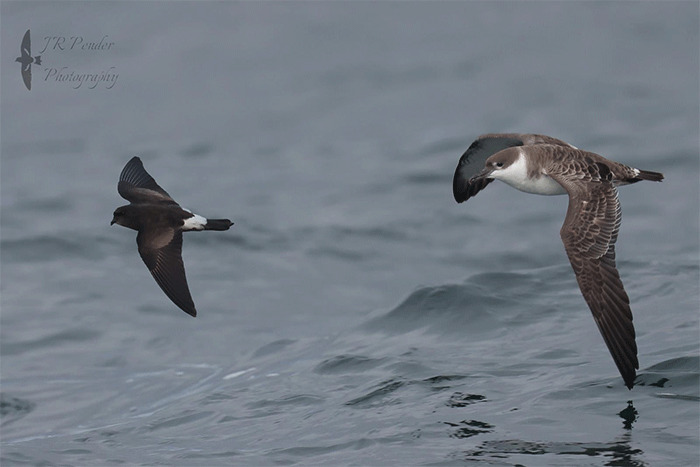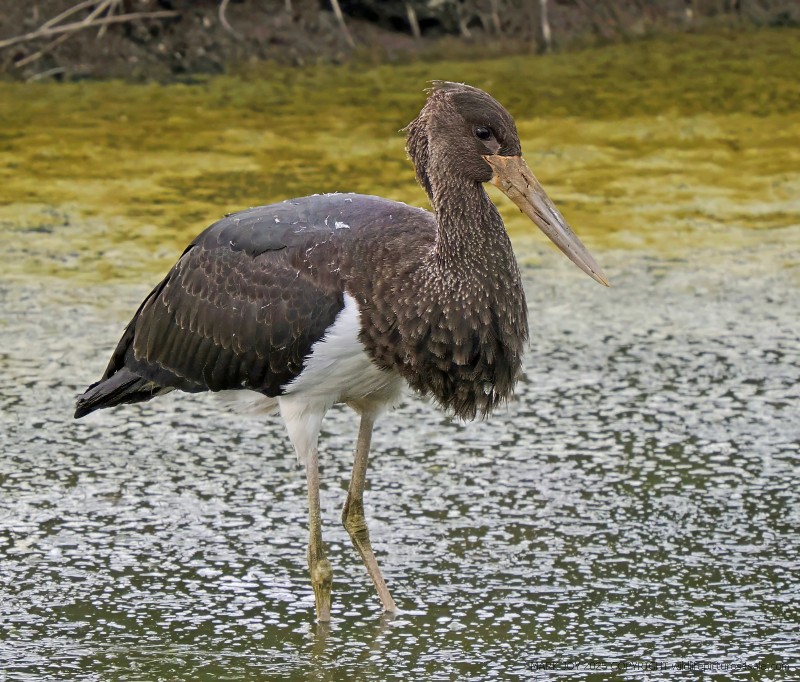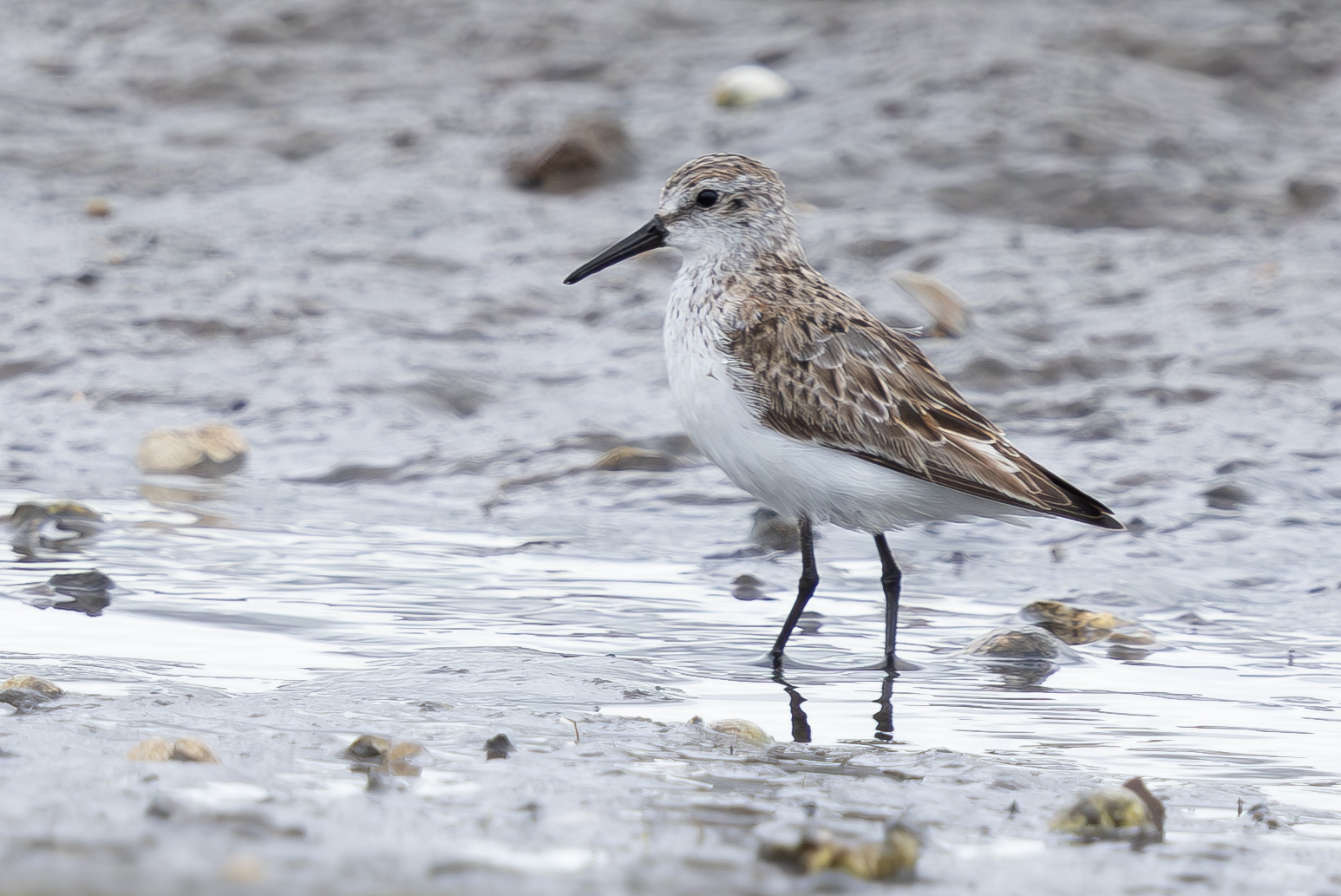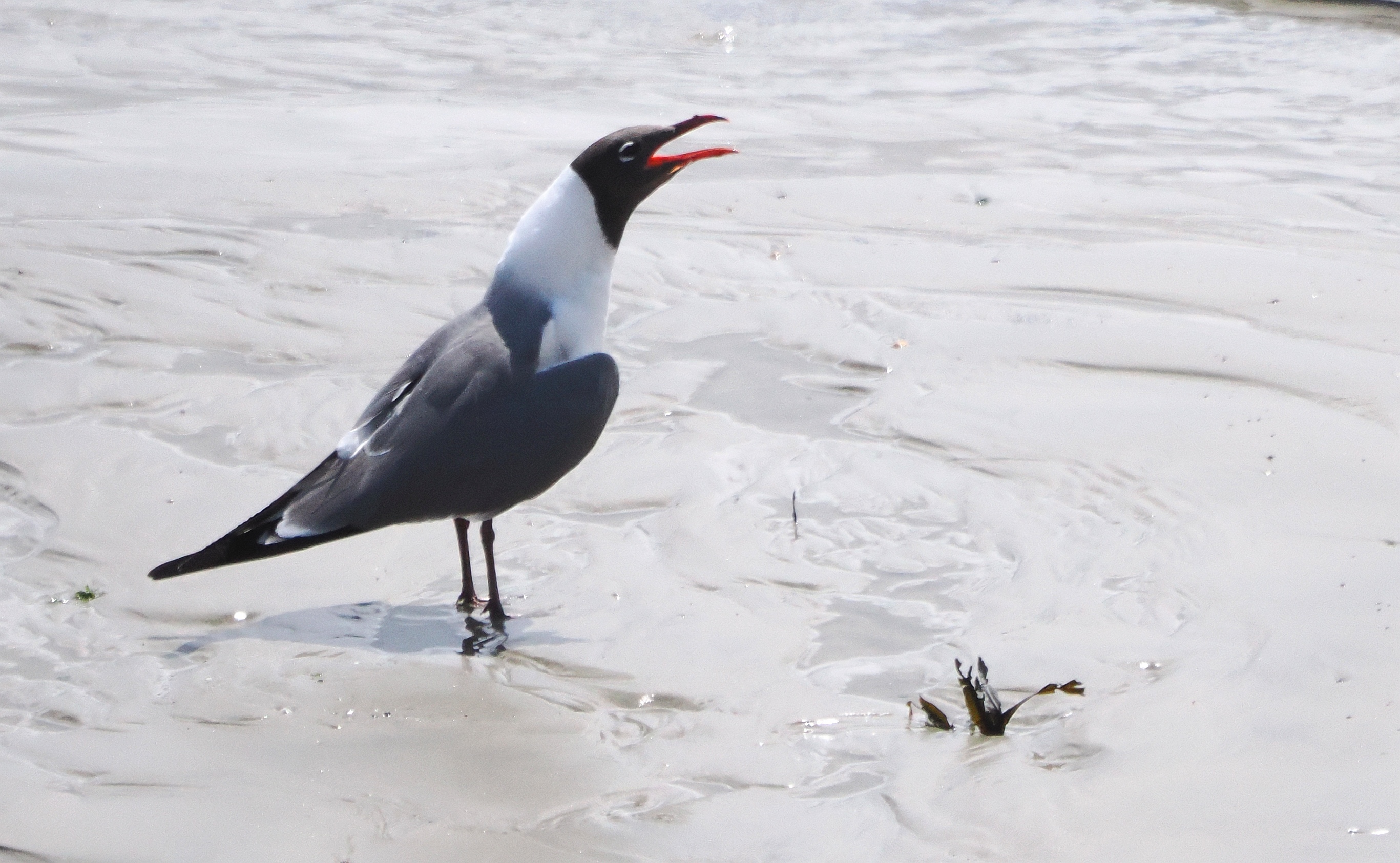Weekly birding round-up: 25 - 31 July 2025
Still no outstanding new bird to set the British or Irish birding scenes afire this past week, as the year continued to pause, catch its breath, and get ready for the serious business of late summer and the transition to autumn. It fell to a former highlight of the earlier summer period to put in an (albeit fleeting) appearance again and grace the headlines.
Last seen on North Uist (Western Isles) on 15th July, there’d been no further sign of the Black-winged Pratincole that spent so much of the earlier summer in Shetland. Given it had relocated to the Western Isles it wasn’t too much of a leap of imagination to think it had kept on going, its Scottish summer sojourn at an end.
But then there it was again this past week, once more seen on North Uist on 29th-30th. A surprise, certainly, and a pleasant one, for it’s only the second record for the county.
We start the seabirds once again with Wilson’s Petrel, which continued to do the business in some style this week, with around 95 birds logged over the course of recent days. As usual, the Scilly pelagics enjoyed the lion’s share of them, accounting for at least 27 birds during the week, with a peak count of 16 on 25th. Some 12 miles off Courtmacsherry (Co.Cork), nine birds were logged on 27th. The best tallies of those shackled to land came from Pendeen, where half a dozen birds were seen on 27th and 28th.

Two Leach’s Petrel was trapped and ringed on Orkney Mainland at Birsay on 26th; while seawatching from Lewis (Western Isles) yielded two on 26th, and five on 29th; and one was seen from the ferry to Inishmore (Co.Galway) on 29th.
Cornwall once more gave us sightings of Fea’s Petrel sp this week, in the morning of 25th from Pendeen, and in the afternoon of 27thh from The Lizard.
A Barolo Shearwater was also seen from Pendeen on 27th.
A shade over 75 Cory’s Shearwater were seen during the week, the bulk of those coming in the form of the 42 seen from Bridges of Ross (Co.Clare) on 26th.
Great Shearwater scarcely did much better, for all their numbers rose during the week to a giddy 145 birds. Of those, the best count came from Bridges of Ross (Co.Clare), where 67 birds were logged on 26th.
2,050 Balearic Shearwater sounds like a hefty count of the species, until one consider that most of that number were once again in Devon – here some 1,983 were seen from Berry Head on 29th – at least 1,000 remained off there on 30th.
Berry Head also gave us three of the week’s 15 Pomarine Skua, seen passing there on 29th; and on 30th three were noted passing Flamborough (East Yorkshire) in the course of the day.
Single Long-tailed Skua were seen in Falmourth Bay (Cornwall) in the evening of 25th, and at sea off Courtmacsherry (Co.Cork) on 27th.
Still heading the long-legged beasties this week, the recent Black Stork remained settled in Suffolk, wandering around the Hollesley and Boyton Marshes RSPB general area on 25th-31st.

The week was another busy one for Night Heron - settled birds remained at Marden Quarry (Northumberland) on 25th-30th; at Grimley (Worcestershire) on 25th-28th; and at Rye Meads RSPB (Hertfordshire) on 25th-27th. Further sightings came from Dungeness RSPB (Kent) on 25th, near Otterton (Devon), also on 25th, and at Wat Tyler CP (Essex) on 30th.
In Dorset the Purple Heron remained at Little Sea on Studland on 26th, and may have accounted for that seen in Poole Harbour at Furzey Island on 27th. Additional birds this past busy week were seen at Filey Dams YWT (North Yorkshire) on 25th; at Kingfishers Bridge NR (Cambridgeshire) on 26th-27th; and over Worth (Kent) on 29th.
A possible Squacco Heron was reported from Llyn Coron (Anglesey) on 30th.
Our regular quartet of Glossy Ibis continued to be seen regularly this week - at Deeping Lakes LWT (Lincolnshire) on 25th-30th; at Otmoor RSPB (Oxfordshire) on 25th-31st; at Misson (Nottinghamshire) again on 25th-31st; and at Lough Atalia (Co.Galway) on 26th still. Another was seen in Cambridgeshire at Etton-Maxey Pits on 29th.
The quackers livened up a little last week with three Lesser Scaup to be seen, and they remained available during the week just gone too – a drake still in Greater Manchester at Audenshaw Reservoirs on 25th-30th, and two eclipse drakes still present at Belvide Reservoir (Staffordshire) on 25th-31st.
The eclipse drake Ring-necked Duck also remained at Ogston Reservoir (Derbyshire) on 25th-29th. A female was present on Corbally Road Reservoir (Co.Antrim) on 31st.
Completing the freshwater set, the drake Ferruginous Duck remained at Draycote Water (Warwickshire) on 25th-31st.
Up in Scotland the immature drake White-winged Scoter was still at Musselburgh Lagoons (Lothian) on 27th-31st.
Also still present in the Musselburgh area, the drake Surf Scoter remained off there on 25th-31st.
Waders continued there seasonal blossoming this past week, with all manner of variety on the move.
Starting in Scotland, a possible Pacific or American Golden Plover was seen on the Ythan Estuary (Aberdeenshire) on 28th.
An American Golden Plover meanwhile was found on Rogerstown Estuary (Co.Dublin) on 29th; and another at Carrahane Strand (Co.Kerry) on 30th.
Three adult White-rumped Sandpiper were noted this week – lingering birds at Snettisham RSPB (Norfolk) on 25th-31st; at Beacon Ponds NR (East Yorkshire) on 26th-30th; and at Oare Marshes KWT (Kent) on 28th-31st.
Kent also scored a Pectoral Sandpiper at Dungeness on 29th-31st; while in Norfolk, another was present at Snettisham RSPB on 25th-31st. Additional birds this week were logged at Lady’s Island Lake (Co.Wexford) still on 25th-31st; at Inch Island Lake (Co.Donegal) on 26th; on Holy Island (Northumberland) on 25th; over Alston Wetland (Lancashire & North Merseyside) on 28th; and on North Ronaldsay (Orkney) on 29th-30th.
Up in Ayrshire, the resident Western Sandpiper remained settled at Maidens on 25th-31st. Easy to become complacent when it’s this omnipresent, but let’s not forget this is a top drawer rarity.

A Temminck’s Stint was present at Abberton Reservoir (Essex) on 30th-31st.
The Long-billed Dowitcher remained at Tacumshin (Co.Wexford) on 25th-31st.
In Lancashire & North Merseyside the Lesser Yellowlegs was still to be seen at Leighton Moss RSPB on 26th-31st. Down in Hampshire, the recent bird reappeared at Keyhaven on 27th, and Normandy Marsh on 28th. A further bird was seen at Harper’s Island (Co.Cork) on 26th.
Finally, a Grey Phalarope was seen at sea some 12 miles south of Courtmacsherry (Co.Cork) on 27th.
Cementing Kent’s strong weekly showing, it retained its regular adult Bonaparte’s Gull at Oare Marshes KWT still on 25th-31st.
The best of the gulls, however, was the adult Laughing Gull that dropped into Cornwall this week – seen on 27th at Sennen Cove and Penzance, on 28th-29th still at Penzance, and also on 29th at Hayle Estuary RSPB and St Ives.

Sabine’s Gull were meanwhile seen off Cley (Norfolk) on 26th, from Hartlepool Headland (Cleveland) on 28th, in Blakeney Harbour (Norfolk) on 30th, and off Sizewell (Suffolk) on 31st.
An adult Ring-billed Gull dropped in to St Kilda (Western Isles) on 27th.
The recent Gloucestershire Caspian Tern was seen this week at Slimbridge WWT on 25th-27th; while one was present in Dorset at Longham Lakes on 25th; and another seen in Leicestershire at Eyebrook Reservoir on 29th-31st, with sallies to Lyndon NR on 30th and 31st also.
In Co.Dublin the male Least Tern was again seen near Portrane on 25th. Another sighting came on 30th at Laytown (Co.Meath).
And finally, the ringed female American Black Tern popped up again this week – she’d found her way to Tyninghame Bay (Lothian) on 24th-25th and, after a flying visit back to Long Nanny (Northumberland) on 26th, she was back at Tyninghame on 27th-29th and 31st, and John Muir CP (Lothian) again on 30th.
The main event in these quarters this week was the breaking news that Montagu’s Harrier had successfully bred somewhere in England this summer. That this should be the norm rather than the exception goes without saying. But good news, jaded cynicism aside. More of this, please.
A possible Black Kite was reported in Somerset at Stockhill on 27th. A confirmed bird was seen in Dorset over Portland on 30th.
Speaking of breeding birds, will we learn in the fullness of time that this year’s sustained influx of Hoopoe led to a happy event somewhere? Time will tell, but this week a single bird was seen in Devon near South Milton Ley on 26th.
A Bee-eater was logged at Minsmere RSPB (Suffolk) on 26th also.
Back to emerging news of rare breeders, more good news this week – a pair of Red-backed Shrike have fledged five young in Shetland at Aith Meadows SSSI.
Staying in Shetland, on Fair Isle the settled male Eastern Subalpine Warbler was still present on 26th.
A Rose-coloured Starling was seen at Wide Open (Northumberland) on 26th.
In Gloucestershire, the male Bluethroat was seen again briefly at Slimbridge WWT on 26th.
Finally, a Serin was noted over Kingsdown (Kent) on 26th.
Oh so close to us this week, a Black-winged Kite was seen on Alderney in the Channel Islands on 29th.
In France, the returning White-rumped Swift remained in the Red-rumped Swallow colony at Minerve on 30th; the Bridled Tern on Ile aux Moutons on 29th; and the dark morph Western Reef Heron at Decize still on 30th.
It pretty much goes without saying that someone’s going to get lucky on a seawatch this coming week with a Fea’s/Zino’s/Desertas Petrel sp scything into view somewhere, presumably off the Cornish coast. And as we kick off our August account for another year, there’s plenty of seabird precedent from the first week of the month with which to get the pulse racing…
Cream of the crop must surely be the Bulwer’s Petrel noted off Galley Head (Co.Cork) on 1st August 2013. But there are also historic records of Barolo and Scopoli’s Shearwater, Swinhoe’s Petrel, and Black-browed Albatross. None of which would ruin anybody’s day.
Waders remain a clear and present danger, with White-rumped Sandpiper still enjoying its peak time here, and mounting past records of Baird’s, Semipalmated, and Stilt Sandpiper all owing themselves to the week ahead.
Where passerines are concerned we’re very much in the Two-barred Crossbill zone now, and it’s also getting to the time when a Aquatic Warbler isn’t wholly out of the question. The latter’s heyday may well be behind us, and it’s arguably more likely to appear in a ringer’s net than before some lucky observer in the field, but never say never…

Jon Dunn
1 August 2025
Many thanks to all this week's contributors for your photos and videos
Share

















